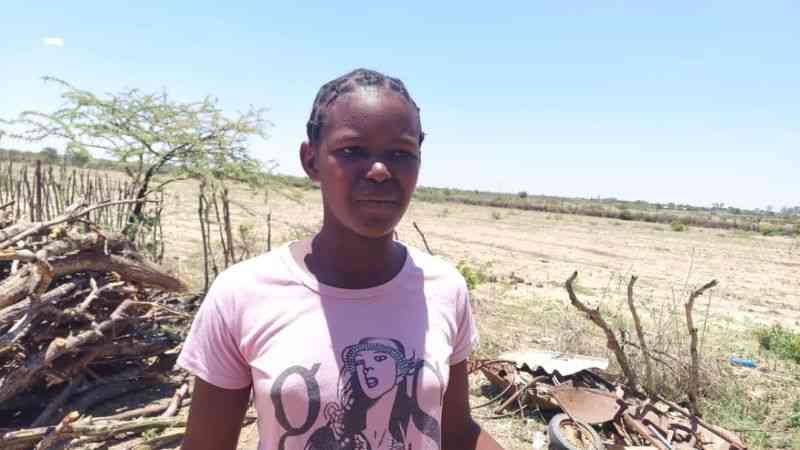
Sixteen-year-old Sharon Mlambo desires to be a medical doctor.
She believes she has what it takes to fulfill her dream and serve her community.
Mlambo of Nqakala village in Umguza district, Matabeleland North province sat for 'O’ Level this year and she hopes to proceed to 'A’ Level.
“I have seen a lot of my peers drop out of school for various reasons,” she said.
“One of my friends was forced to drop out of school after she fell pregnant but she managed to sit for the exam.
“The situation was bad, but she is coping.”
Mlambo said school dropouts, mainly among girls, was a major cause for concern in her community.
According to Unicef, 89% of children in Zimbabwe complete primary education, with only 15% of all children completing upper secondary education.
- More action needed to stem child marriages
- Child marriage: A heavy cost for young girls in Africa
- Feature: Cyclone Idai victims struggling with mental health challenges
- Child marriage comes with a heavy cost
Keep Reading
Mlambo is among many girls in Matabeleland North who are part of a unique programme designed to empower adolescent girls and young women.
The Sista2Sista programme has touched the lives of hordes of girls in Zimbabwe, particularly in rural communities through mentorship.
The Sista2Sista clubs offer a safe place where vulnerable adolescent girls and young women can speak with mentors and each other about their problems.
Girls in the club learn about sexual and reproductive health and rights, financial literacy, and how to navigate difficult social situations, including coercive relationships.
The programme also aims to give girls the confidence and self-esteem to stand up for themselves.
“I never thought l would go this far with my education after seeing my peers drop out of school,” Mlambo said.
“My dream to become a doctor are alive, thanks to the Sista2Sista programme.”
Mlambo, who during the Sista2Sista session proved to be the most intelligent, said the programme had an enormous impact on her life.
“I have learnt a lot of things, including that early marriages are wrong,” she said.
“They are wrong in the sense that they breed gender-based violence, something that I have seen happening to my friends who were married under the age of 16.
“Apart from early marriages, we also do sessions on sexual and reproductive health as well as HIV and Aids.”
Sista2Sista mentor at Nqakala village Dorothy Mhlauli said the programme helps girls and young women to socialise with their peers and learn from others about how to defend their sexual reproductive health rights.
“Girls and young women learn a lot of things under the Sista2Sista programme, with the main emphasis being helping girls navigate difficult social situations,” she said.
“A lot of girls who have gone through this programme are doing well and the mind-set of the community has changed.”
Matabeleland North province is characterised by rampant gender-based violence, which is a major driver of HIV.
NAC provincial manager Dingaan Ncube said the province had a 15,5% prevalence rate.
“The rate is relatively high compared to the national prevalence which stands at 11,1%,” he said.
“We are mainly experiencing high, new HIV infections among young women.”
According to the 2022 Zimbabwe epidemic status report, approximately 1,3 million people, accounting for 8,7% of the total population, are people living with HIV.
The impact of HIV on women is particularly significant, as they make up 61% of the 1.2 million adults living with HIV.
District Aids coordinator for Umguza Mongiwabesuthu Ngwenya believes the Sista2Sista initiative was among a cocktail of interventions meant to change the mindset of the community.
“The Sista-2-Sista programme has been discovered to be the best intervention to protect our young girls and women,” Ngwenya said.
“The 10-24 age group is the most affected hence the need for them to be empowered through the scientific programme.
“Monitoring the girls after the programme is somehow difficult but the outcomes and testimonies from the communities based on their behaviour after training are encouraging.
“Those that come from the programme are in a better position in terms of sexually related decision-making as opposed to those that have not undergone it.”
Nqakala village head Vanisher Zenzele Nkomo said programmes such as Sista2Sita, were going a long way in the response to HIV and Aids.
“Such programmes are doing a good job in as a far as changing the behaviour of society,” he said.
“We are working very well with organisations such as NAC in the response to HIV and other diseases.
“I am happy that such programmes are yielding positive results.
“You will realise that we are one of the districts with a high HIV prevalence in the province and we thank NAC for the intervention programmes that are taking place across the district.”
Nkomo said there was need to do more programmes that sensitise communities and engage community leaders in discussing issues like child marriage as well as HIV and Aids.
Approximately one in three girls in Zimbabwe are married before their 18th birthday.
Child marriage predominantly affects girls who live in poverty and in rural areas.
Girls from the poorest 20% of households are more than four times as likely to be married/in union before age 18 than girls from the richest 20% of households.
The less educated a girl is, the more she is likely to marry during her childhood.







